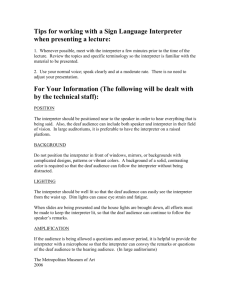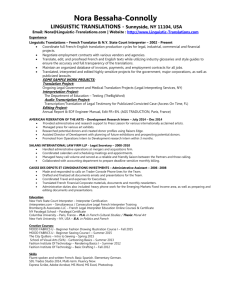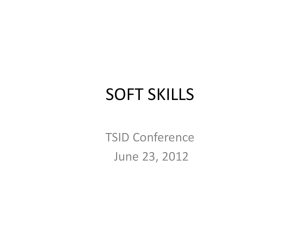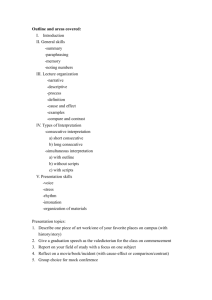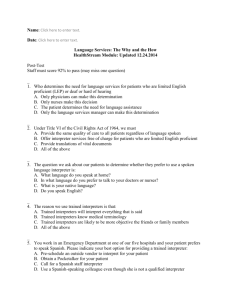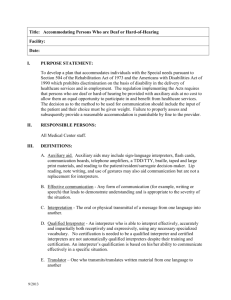checklist for instructors working with sign language interpreting
advertisement
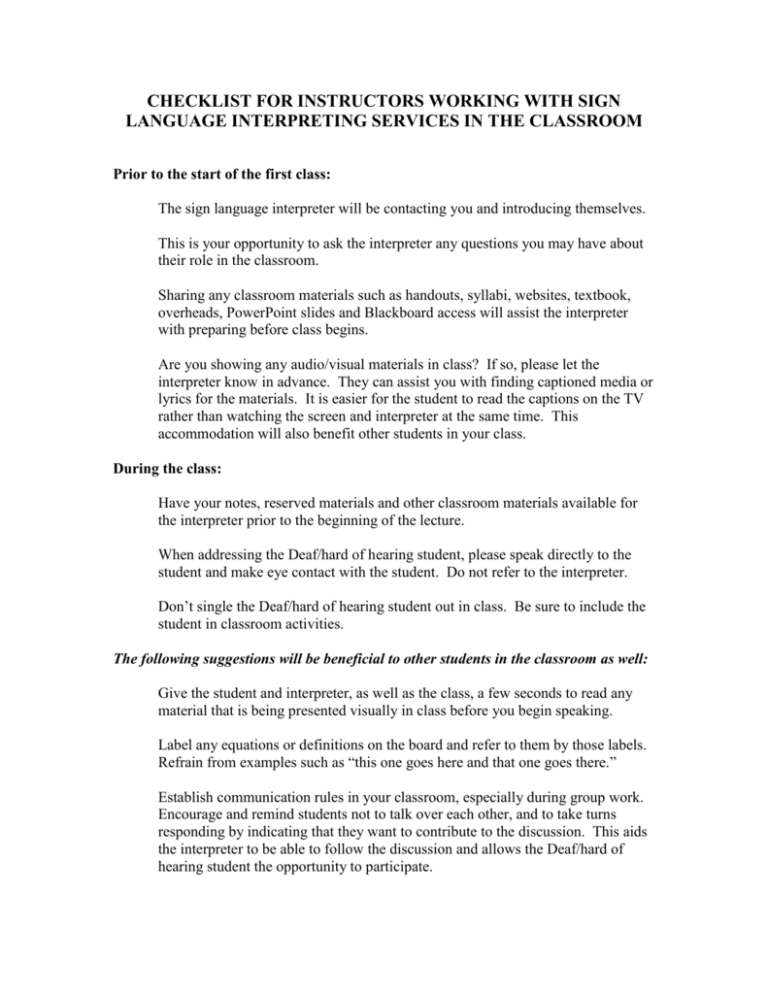
CHECKLIST FOR INSTRUCTORS WORKING WITH SIGN LANGUAGE INTERPRETING SERVICES IN THE CLASSROOM Prior to the start of the first class: The sign language interpreter will be contacting you and introducing themselves. This is your opportunity to ask the interpreter any questions you may have about their role in the classroom. Sharing any classroom materials such as handouts, syllabi, websites, textbook, overheads, PowerPoint slides and Blackboard access will assist the interpreter with preparing before class begins. Are you showing any audio/visual materials in class? If so, please let the interpreter know in advance. They can assist you with finding captioned media or lyrics for the materials. It is easier for the student to read the captions on the TV rather than watching the screen and interpreter at the same time. This accommodation will also benefit other students in your class. During the class: Have your notes, reserved materials and other classroom materials available for the interpreter prior to the beginning of the lecture. When addressing the Deaf/hard of hearing student, please speak directly to the student and make eye contact with the student. Do not refer to the interpreter. Don’t single the Deaf/hard of hearing student out in class. Be sure to include the student in classroom activities. The following suggestions will be beneficial to other students in the classroom as well: Give the student and interpreter, as well as the class, a few seconds to read any material that is being presented visually in class before you begin speaking. Label any equations or definitions on the board and refer to them by those labels. Refrain from examples such as “this one goes here and that one goes there.” Establish communication rules in your classroom, especially during group work. Encourage and remind students not to talk over each other, and to take turns responding by indicating that they want to contribute to the discussion. This aids the interpreter to be able to follow the discussion and allows the Deaf/hard of hearing student the opportunity to participate. If you or a student asks a question, please allow a slight pause before responding to allow the interpreter time to finish relaying the complete message. Also, when another student speaks and is not in the Deaf or hard of hearing student’s direct line of vision, simply repeat the comment or question and point or motion to show who is speaking. When students or groups give presentations, please remind them to speak clearly and give any handouts to the interpreter, preferably before the presentation. If you have more than one Deaf and hard of hearing student in your class and are assigning students to groups, please keep in mind the number of Deaf and hard of hearing students to the number of interpreters present in the class. After Class: Please allow time for the interpreter to discuss course content or ask questions if needed. Contact the Office for Students with Disabilities if you have any questions or concerns. Ongoing communication is encouraged so the interpreter can effectively provide services to the student.



